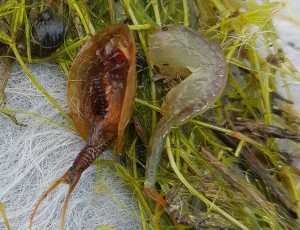Highlights from the 2016 Australian Society for Limnology Conference in Ballarat
I recently had the pleasure of attending the annual Australian Society for Limnology (ASL) Conference in Ballarat. The theme of this year’s conference was ‘Waters of past and present: shaping pathways for future management‘ and focused on decision making in times of uncertainty. This theme reflected the importance of accessing ancient knowledge, measured changes, current information and predicted scenarios in the management of our aquatic ecosystems for the future. Front and centre of discussion was the impact that climate change, and in particular climate variability, will play on our ecological appreciation and “management” over the coming decades.
I gave a short presentation on establishing reference points for measuring the success of our restoration actions. Using Long Swamp as an example, I stepped the audience through our historical investigations and how we used this to understand why the system is showing signs of drying. Ultimately this pointed to the impact of the artificial channel which we have since rectified by effectively recreating an temporary sand-dune i.e. the sand bag weir. And the results from the changes we are seeing in the emergence of more aquatic plants, and increasing numbers of obligate freshwater fish, indicate that the restorative actions are already producing a positive shift in the wetland system.
Assoc. Prof. Belinda Robson from Murdoch University, provided an excellent keynote address on the importance of aquatic refugia and connectivity, with quite a bit of focus on some the Grampians streams and species which are very relevant to the Gooseneck and Brady Swamp system. One of Belinda’s students, Scott Strachan gave a presentation on desiccation survival strategies of invertebrates, something which got me thinking about some of the species I’ve been seeing in wetlands this year, on the back of the big dry, and how we might be able to measure wetland inundation history and responses to hydrological restoration in terms of the invertebrate species we are finding.

Notosraca (shield shrimp) on left and Anostraca (freshwater fairy shrimp) on right. Two species which emerged at Walkers Swamp in response to winter inundation.
One thing which has really stuck with me following the conference is an afternoon session on Wednesday devoted to Indigenous water knowledge. The recognition that water doesn’t belong to anyone, but that it simply moves through, with it’s foremost purpose being to quench the needs of the land. We can’t have expectations of a right to store and use but can simply make the most of the legacy it leaves behind, as it moves through. However, in a managed environment where water is now an economic commodity, securing water entitlements is critical for the spiritual, cultural, social, environmental and economic benefit of Indigenous nations. Gunditj Mirring Traditional Owners Aboriginal Corporation chief executive and Gunditjmara man Damien Bell spoke about the significance of Lake Condah, as one of the world’s oldest aquaculture systems and, at 6,600 years old, contains evidence of a settlement which is older than Stonehenge and the Pyramids! Following drainage and attempts to farm, the site has now been restored and is a fundamental for consolidating traditional water knowledge and for fostering a greater appreciation and celebration of Aboriginal culture.

